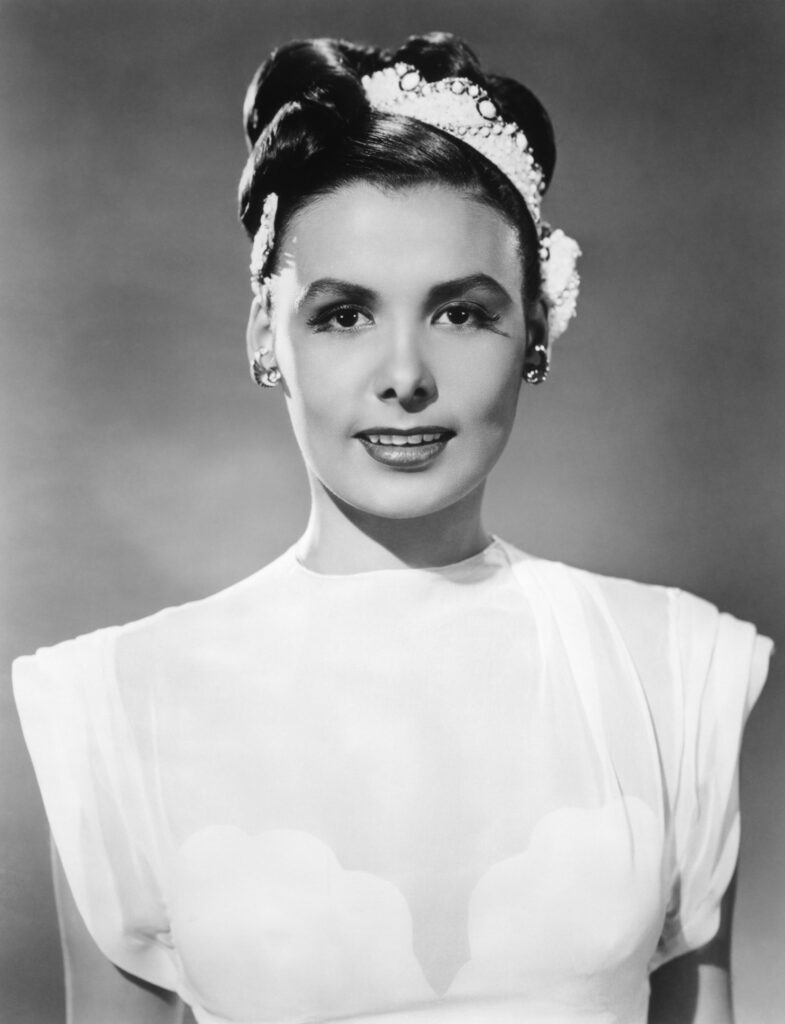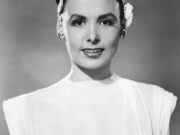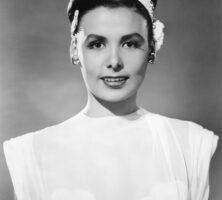Perhaps best known for her sultry rendition of the song “Stormy Weather,” which she performed in the 1943 film by the same name, singer Lena Horne spent part of her childhood in Fort Valley and Atlanta. A recipient of several honors commemorating her contributions to the performing arts, including a Kennedy Center Honor in 1984 and induction into the Georgia Music Hall of Fame in 1991, Horne also spent much of her life advocating for civil rights.

Image from Wikimedia
Lena Calhoun Horne was born in Brooklyn, New York, to Edna Scottron and Edwin “Teddy” Horne on June 30, 1917. Her parents separated when she was a child, and she lived with her paternal grandparents and uncle. Horne’s grandmother Cora Calhoun Horne was well known in her community as an active supporter of many civil rights causes and took Horne with her to meetings of the National Association for the Advancement of Colored People (NAACP), Urban League, and Suffragette organizations. When Horne was about six years old, she joined her mother, a singer and dancer in various drama troupes, on tour. Over the next six years, they moved often, and while her mother performed or looked for work, Horne stayed with family friends, relatives, or residents of the houses in which she and her mother boarded. In her autobiography, Lena (1965), Horne recounts the time she spent with two Macon women who taught her about traditional southern cooking and told her Bible stories. Horne also joined a youth choir, which performed at the city hall, during her time in Macon.
From 1927 to 1929 Horne lived in Fort Valley with her uncle, Frank Horne, a teacher and dean of students at Fort Valley High and Industrial School (later Fort Valley State University), who later served as director of the Office of Race Relations during the administration of U.S. president Franklin D. Roosevelt. She attended school and was reunited with her father during his two-month stay in the town. From Fort Valley, Horne moved to Atlanta, into a house that her mother had bought there. The two did not stay in Atlanta long, however, and moved back to New York when Horne was twelve years old. In 1933, at age sixteen, Horne began her career in show business as a dancer at Harlem’s famed Cotton Club. A few years later she began singing with touring dance bands, making her recording debut with Noble Sissle’s band in 1936. She toured with Charlie Barnet’s band from 1940 to 1941 and, in doing so, was the first African American to tour with an all-white band.
In 1937 Horne married Louis Jones, with whom she had two children, Gail and Edwin, before the couple divorced in 1944. Edwin died from kidney complications in 1970, just one year before the death of Horne’s second husband, arranger and composer Lennie Hayton, whom she married in 1947.
In 1939 Horne made her first Broadway appearance, in the musical Blackbirds, and received acclaim in 1957 for her performance in the Broadway show Jamaica. Her stage career continued into her sixties with the autobiographical show Lena Horne: The Lady and Her Music, which debuted on Broadway in 1981 before touring the country. That show garnered many awards, including the Drama Desk award, a citation from the New York Drama Critics’ Circle, a special Tony Award, and two Grammy Awards (for the show’s soundtrack).
In 1942 Horne became the first Black performer to be awarded a contract with a major film studio when she signed with MGM. She appeared in several musicals for the studio, including Cabin in the Sky (1943), Stormy Weather (1943), Broadway Rhythm (1944), Ziegfeld Follies (1946), Duchess of Idaho (1950), and The Wiz (1978). Most of her roles were not integral to the films’ story lines and were filmed in such a way that the segments featuring Horne could easily be edited out. This was a common practice at Hollywood studios and was done so that the edited versions could be shown to southern moviegoers, who often would not watch movies featuring Black actors, especially if their roles were not as servants or other subordinates. For her part, Horne refused to play such roles traditionally given to Black women as maids or nannies; in 1946 she dropped out of a stage musical cowritten by Johnny Mercer when the NAACP boycotted the production for its negative stereotypes of African Americans. She also appeared in television specials and as a guest on variety shows, including The Ed Sullivan Show and The Perry Como Show. Horne’s film career was put on hold in the early 1950s, when she and many other politically active performers suspected to be Communists were blacklisted as a result of the McCarthy hearings in the U.S. Congress. Though she was unable to appear in movies and on television, she sang in nightclubs and cabarets. In the mid-1950s, when the blacklist lifted, Horne returned to Hollywood.
Horne continued to remain active in the NAACP and to participate in civil rights events, often singing at rallies, including one sponsored by the Southern Christian Leadership Conference in Atlanta in 1963. That same year she participated in the March on Washington, during which Martin Luther King Jr. gave his “I Have a Dream Speech,” and spoke at a rally with civil rights leader Medgar Evers, just days before he was assassinated.
Horne spent her later years in New York City, where she died on May 9, 2010, at the age of ninety-two.






